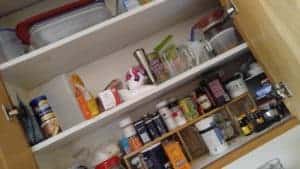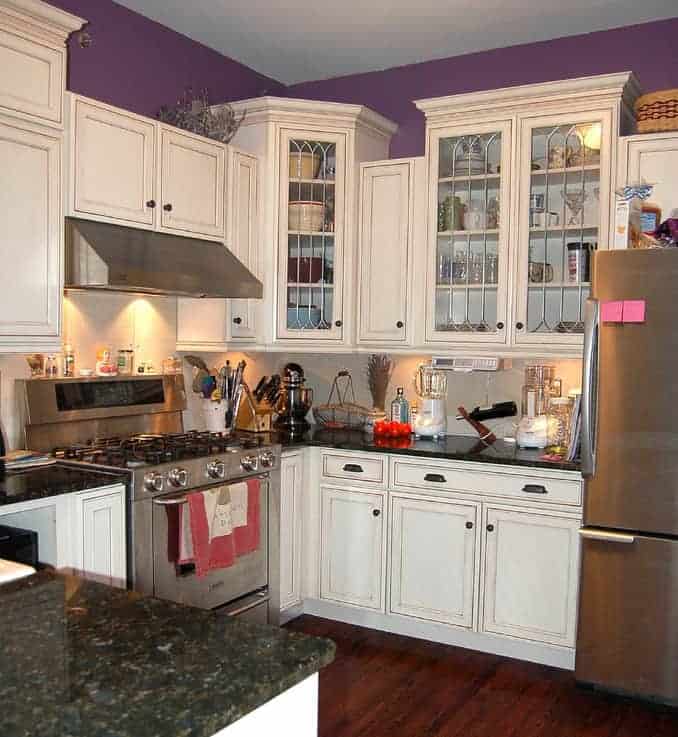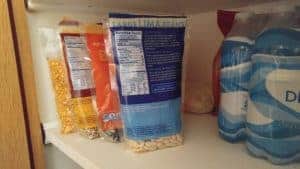You have made the decision to create a pantry in your kitchen space. Pantries are a great way to not only organize your kitchen, but it is also great for keeping your food stores safe and fresh. Before you settle on a design, take a look at this helpful list of questions, concerns and ideas to find the right design matrix for you.
Size, Layout and Movement
First things first: determine what type of pantry layout will serve your immediate needs. Take into consideration the size of your family, the frequency of kitchen activity and your home’s overall size. It is also a good idea to add in a little extra space for any unexpected changes, such as family additions or the need for more storage space.
Allow for comfortable free-flowing movement for you and your family to operate in the space. A small walk in pantry does no good if you can barely turn around or reach for any items.
Make sure your doorways are wide enough for entry for both general usage, but also to get your shelving in and out of the pantry. It is also a good idea to have adequate door frame space for any larger appliances or items you may want to store in the pantry.
Determine layout that meets your needs, plus additional space for what you don’t anticipate (will you

Location
It is always a good idea to situate your pantry in the northeast corner of the house. This tends to be the coolest spot in the house and will help to preserve your dry and canned goods. It is also a good idea to keep your pantry within a small walking distance of the most used portion of your kitchen. Keeping a good flow between your work space and the pantry allows for a more efficient use of the entire kitchen.
Shelving
Shelving is everything when it comes to pantries. Your pantry can be anything you want it to be: food storage, appliance storage or general storage of household items.
If you are mainly using it for food storage, make sure to make accommodations for some shallow shelving for your canned items so they are not only easily visible, but easily accessible. Deep drawers are a good idea for any bagged dry goods, while deep shelving is good for boxed bulk food items.
If you are looking to store small appliances and other household items, you may want to focus on deep and tall shelving as well as add hooks and racks to hang items from.
Make the most of your Pantry
Pantries are also a good place to store items that you may not want visible in your kitchen. For example: storing your recyclables bin in the pantry is a good way to keep it out of your way as well as out of the eye of any guests.
Pantries can also serve as a staging area during meal prep, run smaller table top cooking appliances like crockpots or your various liquors to act as a mini bar.
Give it Power
It is always a good idea to add outlets to your pantry. This comes in handy when needing an out-of-the-way space to charge various rechargeable appliances, vacuums, cell phones and flashlights. Again, you can use your pantry space to run a crockpot or two if you are short on counter space (of course always remember to use the utmost caution when doing so).
Bins and lighting
Adding bins to your shelving areas are a great way to store food items that need a nice dry and temperate climate. Food items like potatoes that should be kept separate from other produce do fantastically in a pantry. Fruits like apples and bananas also do well in pantries. Make sure to create separate bins for each type of food.
Good lighting is also important in your pantry not only to see what you have inside, but also if you decide to use the space as an extension of your kitchen prep area. While you will want one central lighting source, string and rope LED lighting can also add functionality with a flare of fun to your pantry. How will you light your pantry?
It is always a good idea to paint your pantry white. This visually brightens and opens the space, but also helps illuminate to make it easier to find items.
The Extras
Make sure that your pantry can accommodate a few little extras like hooks for miscellaneous clothing items: aprons, light sweaters or purses. This helps keep your kitchen clutter free.
Use empty pantry wall space for cork or chalk boards, calendars or decorative prints.
Maximize your pantry’s space without making it impossible to move around or adding unnecessary clutter.
These are just a few things to keep in mind when deciding on your pantry. In a later blog, we will discuss the different types of pantries and how they can work for you!



